MercoPress. South Atlantic News Agency
Tag: Argentine peso
-
Tuesday, December 2nd 2025 - 10:39 UTC
Strong peso leading to outflow of dollars from Argentina

Argentina is on track for a historic outflow of dollars due to surging outbound tourism, driven by a favorable exchange rate. Initial projections for this year have been significantly revised upward, with analysts now anticipating a total dollar outflow between US$11 billion and US$13 billion (around 1.6% of the country's GDP), which would outpace the US$10.662 billion recorded in 2017 under then-President Mauricio Macri.
-
Friday, June 21st 2024 - 23:04 UTC
Argentina records historic foreign trade surplus
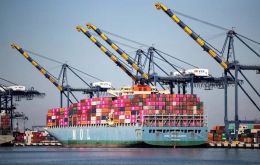
Argentina recorded a historic foreign trade exchange surplus of US$ 2.656 billion in May, Argentina's Trade Exchange (ICA) reported Thursday in Buenos Aires. The new figures surpassed the previous record of US$ 2.543 billion from May 2009. So far in 2024, Argentina has accumulated a balance of + US$ 8.8 billion.
-
Tuesday, December 26th 2023 - 10:44 UTC
Argentina's BCRA planning larger-denomination bills
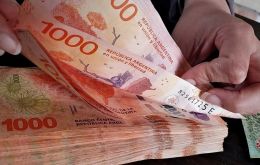
Argentina's Central Bank (BCRA) is entertaining the possibility of issuing AR$ 20,000 and 50,000 bills in a move to keep up with inflation and eliminate the need for large wads of banknotes for nearly every cash transaction.
-
Tuesday, April 25th 2023 - 19:46 UTC
Argentine gov't losing grip: peso keeps plummeting
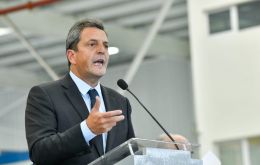
By Mordechai Taji – Argentina's authorities are losing grip of the economy as the “blue” (a euphemism for “black market”) dollar hit AR$ 497 Tuesday before recoiling to AR$ 487, then bouncing back to AR$ 490, down again to AR$ 487 and back up once more to AR$ 495 amid growing unrest.
-
Friday, April 21st 2023 - 10:05 UTC
Argentine peso keeps sinking against US dollar
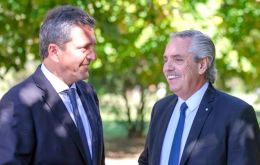
The Argentine peso kept sinking Thursday against the US dollar with the “blue” (a euphemism for “black market”) rate hitting AR$ 440 before closing at AR$ 437/AR$ 432 (buy/sale).
-
Wednesday, March 22nd 2023 - 10:24 UTC
Massa to announce new measures as Argentine peso sinks against US dollar

With the informal exchange rate between the Argentine peso and the US dollar known as “blue” going up AR$ 8, and reaching a new record high of AR$ 394, Economy Minister Sergio Massa is planning a set of measures to reverse that trend. The new package is to be conveyed to businessmen and bankers over breakfast Wednesday before being announced.
-
Wednesday, January 18th 2023 - 09:32 UTC
“Blue” dollar hits new highs against Argentine peso
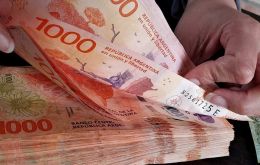
The most widely spread exchange rate between the Argentine peso and the US dollar -known as “blue” - went up AR$ 8 Tuesday hitting a new all-time high of AR$ 378 = US$ 1, it was reported in Buenos Aires.
-
Wednesday, December 28th 2022 - 09:53 UTC
Argentine peso keeps falling against unofficial US dollar
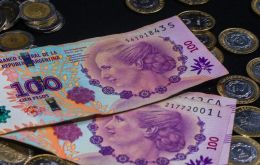
The unofficial “blue” dollar traded for AR$ 355 Tuesday in Argentina, thus reaching a new record high. It was an AR$ $9 increase in one day, AR$ 30 in one week, and AR$ 41 so far in December.
-
Friday, August 5th 2022 - 09:07 UTC
International reports cast doubts on Argentine peso's exchange rate
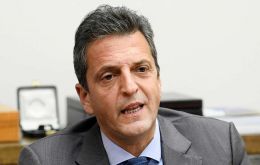
Despite Superminister Sergio Massa's announcement that he would not moot for a devaluation of the Argentine peso, banking entities have issued separate reports raising doubts as to the newly-appointed official's strategy, with the spotlight on the exchange rate issue.
-
Wednesday, July 20th 2022 - 10:45 UTC
Argentina: unofficial dollar crosses psychological AR$ 300 barrier

The unofficial exchange rate between the local peso and the US dollar most commonly used by Argentines, also referred to as “blue,” Tuesday crossed the iconic AR$ 300, reaching an all-time high.
